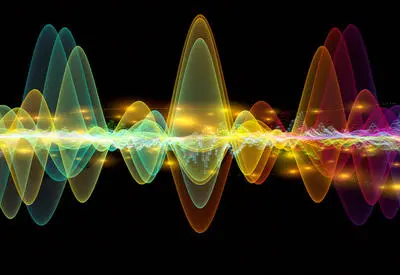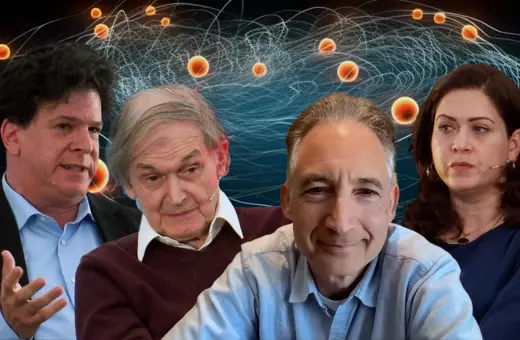The world of quantum physics is a very different world from the day-to-day reality we experience. In the quantum world, interactions across vast distances can occur, non-local interactions. Some quantum ontologies try to explain non-locality using a high-dimensional wave function. But Professor of Philosophy of Science, Valia Allori argues we need to bring our theories back down to three-dimensional Earth, albeit with the inevitable sacrifice of a local universe.
Join Slavoj Žižek, Steven Pinker and many more speakers at the HowTheLightGetsIn Hay 2025 festival this May to debate the most important topics of our time live in Hay-on-Wye. Including our debate on 'The Collapse of the Wave Function'.
Quantum mechanics supposedly reveals to us a world which is very different from what we think it is. I, however, argue that this conclusion is doubtful– it is implausible that we are living in The Matrix.
The world of our immediate experiences, its manifest image, shows us flowing rivers, wandering clouds, and rainbows shining. To understand these phenomena and predict new ones, we have proposed scientific theories. They give us an image of the world, a scientific image, which may differ from the manifest image. For instance, in classical mechanics, everything is modelled as being made up of point-particles. A scientific image is required to explain why we perceive something not as it truly is.
___
Classical mechanics was superseded by quantum theory for its great success in making predictions with unprecedented accuracy and precision. However, quantum theory does not provide a clear scientific image.
___
Indeed, classical mechanics can explain the river’s motion, cloud formation, the colors of the rainbow, and more in terms of particle motion. Nonetheless, there is the (often unspoken) assumption that one should not accept radical departures of the scientific image from the manifest image unless there are no alternatives, all other things being equal. This, among other things, allows us to keep at bay, views encouraging us to doubt everything we believe about the natural world, such as ‘I live in three-dimensions’. I will argue, one such skeptical view to be kept at bay is what philosophers of physics call ‘wavefunction realism’.
 SUGGESTED READING
Reality is just a quantum wave function
By Alyssa Ney
SUGGESTED READING
Reality is just a quantum wave function
By Alyssa Ney
Quantum Mechanics: A Hazy Scientific Image
Before launching into the topic of wavefunction realism, it is first helpful to understand the ‘scientific image’ of its parent theory, quantum mechanics. Classical mechanics was superseded by quantum theory for its great success in making predictions with unprecedented accuracy and precision. However, quantum theory does not provide a clear scientific image. In quantum physics particles can be described as being in a ‘superposition’ of states. These particles can, for example, be described as being both in one position and another at the same time. A ‘wave’ function is the mathematical representation of the ‘state’ of some quantum system, it contains the information of the possible positions, spins, momentums etc. of a particle. This conception came after the discovery that particles on the quantum scale exhibit wave-like behavior.
___
The probability that a particle will be found in one position or another can be calculated prior to observation from the wavefunction. Referring to ‘observation’ is, however, contentious; why isn’t ‘observing’ considered a clearly-defined physical process?
___






















Join the conversation